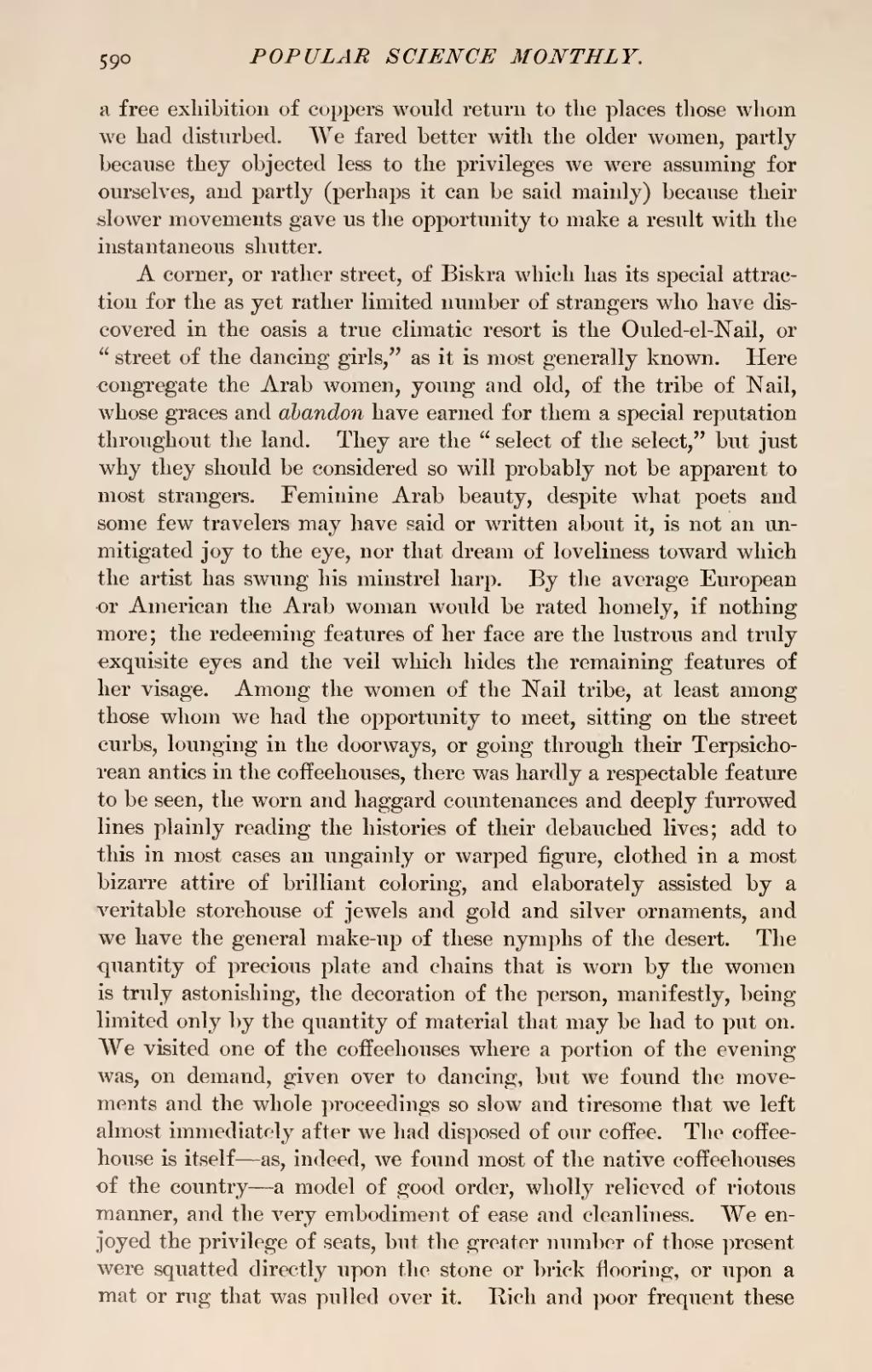a free exhibition of coppers would return to the places those whom we had disturbed. We fared better with the older women, partly because they objected less to the privileges we were assuming for ourselves, and partly (perhaps it can be said mainly) because their slower movements gave us the opportunity to make a result with the instantaneous shutter.
A corner, or rather street, of Biskra which has its special attraction for the as yet rather limited number of strangers who have discovered in the oasis a true climatic resort is the Ouled-el-Nail, or "street of the dancing girls," as it is most generally known. Here congregate the Arab women, young and old, of the tribe of Nail, whose graces and abandon have earned for them a special reputation throughout the land. They are the "select of the select," but just why they should be considered so will probably not be apparent to most strangers. Feminine Arab beauty, despite what poets and some few travelers may have said or written about it, is not an unmitigated joy to the eye, nor that dream of loveliness toward which the artist has swung his minstrel harp. By the average European or American the Arab woman would be rated homely, if nothing more; the redeeming features of her face are the lustrous and truly exquisite eyes and the veil which hides the remaining features of her visage. Among the women of the Nail tribe, at least among those whom we had the opportunity to meet, sitting on the street curbs, lounging in the doorways, or going through their Terpsichorean antics in the coffeehouses, there was hardly a respectable feature to be seen, the worn and haggard countenances and deeply furrowed lines plainly reading the histories of their debauched lives; add to this in most cases an ungainly or warped figure, clothed in a most bizarre attire of brilliant coloring, and elaborately assisted by a veritable storehouse of jewels and gold and silver ornaments, and we have the general make-up of these nymphs of the desert. The quantity of precious plate and chains that is worn by the women is truly astonishing, the decoration of the person, manifestly, being limited only by the quantity of material that may be had to put on. We visited one of the coffeehouses where a portion of the evening was, on demand, given over to dancing, but we found the movements and the whole proceedings so slow and tiresome that we left almost immediately after we had disposed of our coffee. The coffee-house is itself—as, indeed, we found most of the native coffeehouses of the country—a model of good order, wholly relieved of riotous manner, and the very embodiment of ease and cleanliness. We enjoyed the privilege of seats, but the greater number of those present were squatted directly upon the stone or brick flooring, or upon a mat or rug that was pulled over it. Rich and poor frequent these

